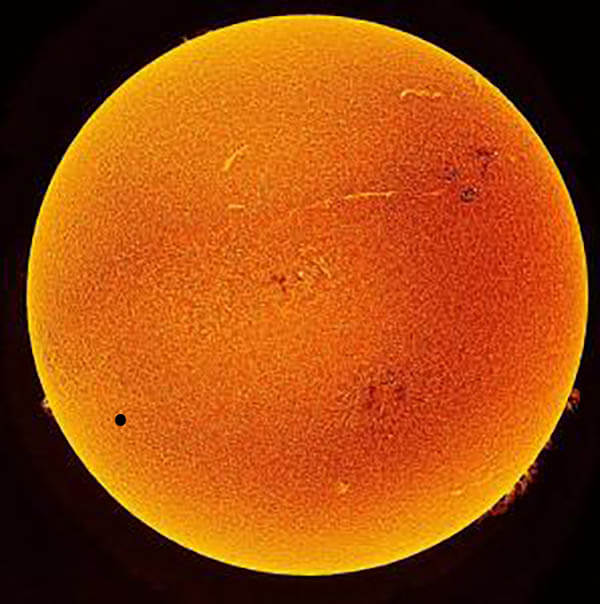
Set your calendar for the Transit of Mercury!
Mercury, for the first time in almost 3 years, will transit our Sun on Monday, November 11th, 2019! Mercury will cross between the Earth and the Sun at just the exact moment to give all of us here on Earth an infrequent occurrence.
Given our position within the Solar System, we can only experience Transits of our 2 Closest to the Sun neighbors- Venus and Mercury. Whereas with Venus the last transit occurred in 2012 and will not occur again until well past our lifetime in 2117- Mercury’s previous transit was in 2016 and is now just around the corner.

Rare Occurrence
Mercury transits are rare, with only an average of 13 events per century. In fact, between the years of 1601 and 2300, Earth will experience only 94 transits of Mercury across the sun in total!
It’s not fair to say that the Earth is without its chances. There are 2 periods every year where Mercury crosses Earth’s orbital plane. Once in Early May and in Early November.
Perfect Circumstances
However, a transit of Mercury only occurs if Mercury crosses between the Earth and the Sun, and also happens to be passing through Earth’s Orbital Plane. In these perfect circumstances, you will be able to see Mercury make its way in front of the sun from Earth.
Due to Mercury’s highly eccentric orbit, its distance from the Sun can vary from anywhere between ~40-70 million kilometers. Mercury’s orbit is also inclined by 7 degrees to the plane of Earth’s orbit- Thanks to these factors, the characteristics, and frequency of Mercury’s transits are variable.

46 Year Series
Scientists and Astronomers tend to break the transits into series, separated by 46 years between transits. That is to say that our 2019 transit belongs in the transit series of the past 1973 transit and the upcoming 2065 transit (keeping in mind, 4 other transits are occurring between now and then, however, grouped with other series mathematically). Overall, the back to back transits can be variable not only in length but also in perceivable size.
During May transits, Mercury appears to be 1/158th the size of the sun; in November Transits, Mercury will appear to be a smaller 1/194th the size of the Sun. This is due to the apparent diameters of both Mercury and the Sun in these periods- during May Transits the apparent (or angular) diameter of the Sun is at 1902 arc seconds, where Mercury is 12 arc seconds. For November, the Sun apparent diameter is 1937 arc seconds, with Mercury at 10 arc seconds.

Conclusion
So for our upcoming November 2019, we may be getting the smaller of the 2 potential occurrences, but it will be a sight to behold regardless. Though, if you plan on holding out for the bigger apparent diameter, you may not want to hold your breath. The next transit of Mercury occurring in May of our calendar year is coming in 2049! The best view of the Transit of Mercury is through your Lunt Solar Telescope. Have yours out and tested before November. Until then, join the rest of us this November 11th, 2019 for a truly ethereal experience.
Fun Facts!
- Mercury does not have any moons or rings!
- Your weight on Mercury is about 38% of your weight here on earth (as Mercury’s surface gravity is 38% of the surface gravity on Earths).
- A year on Mercury is equivalent to only ~88 earth days!
- It is the smallest planet in our solar system, with a diameter of 4879 KM (3032 miles)
- Despite being the closest to the sun, it’s only the 2nd hottest Planet in our Solar System (Venus Ranks # 1!)
- Researchers working with High Precision Planetary Radars have found evidence that Mercury may have a Molten Core